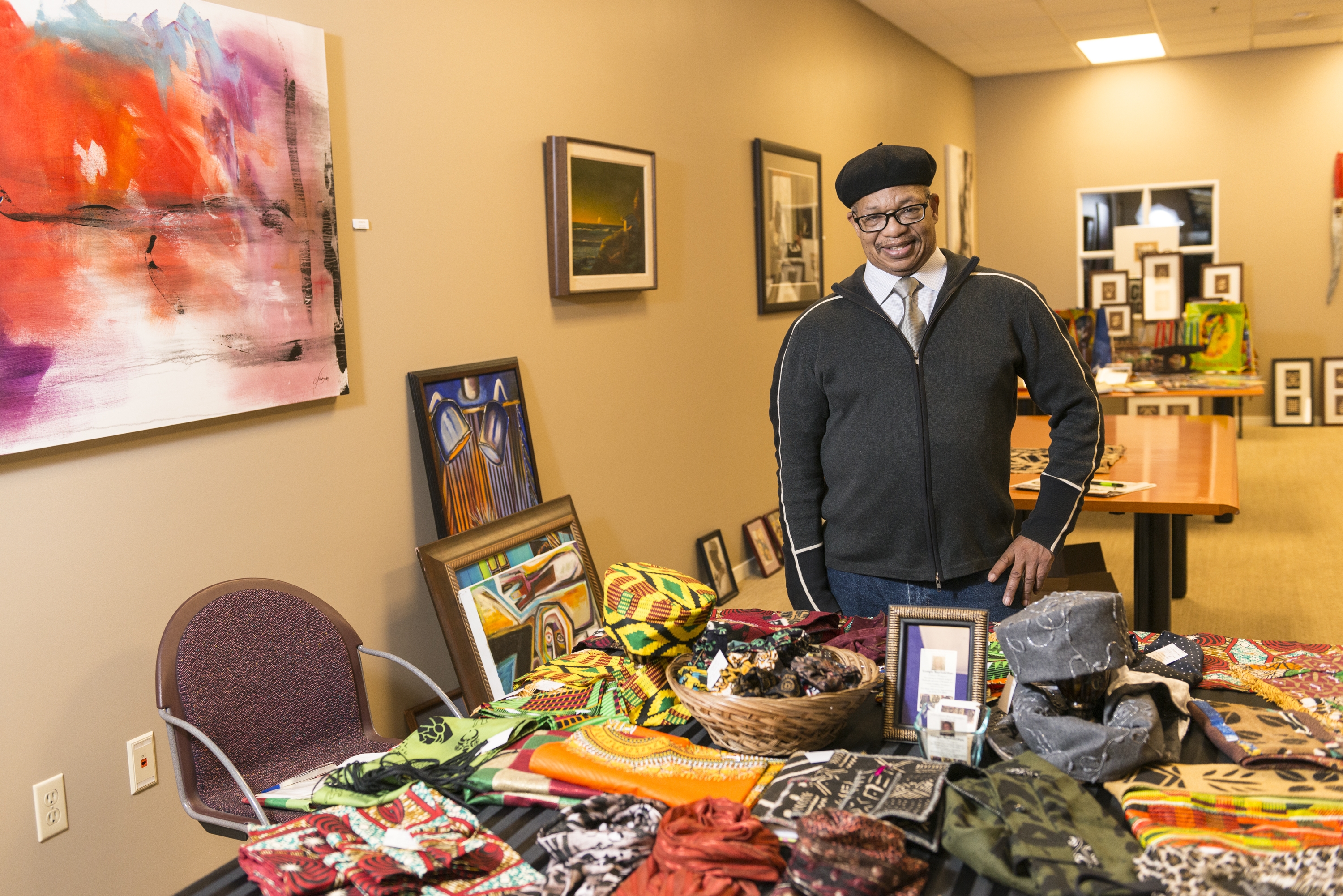Just months after the National Museum of African American History finally opened in Washington, D.C., Grand Rapids got its own African American museum in the heart of downtown.
George Bayard, owner of Bayard Art Consulting and Frameshop, led the charge on the Grand Rapids African American Museum and Archives (GRAAMA), which has now set up shop in a pop-up gallery space downtown.
Bayard’s own gallery has been involved in Grand Rapids’ African American community for more than 30 years. Over time, more and more people came to Bayard asking for appraisals and knowledge about family heirlooms.
“(It) came to a point where we said, ‘All this stuff that is coming out of people’s attics and lockboxes and things are quite valuable and maybe we need a place to store them,’” Bayard said. “So we started going down the slow road to put things in place to do a museum.”
To start, one of the board members, Roy Robinson — co-founder of the James Jackson Museum Of African American History in Muskegon — brought in Margaret Burrows, founder of the DuSable Museum in Chicago. Bayard said that she left a blueprint for the GRAAMA team to follow.
A committed group of volunteers and board members have since charted slow but steady steps to becoming an official museum. After its nonprofit status was acquired earlier in 2016, GRAAMA was able to seek grants from the Dyer Ives Foundation. This supported the efforts to secure a contract with the city of Grand Rapids for the space at 87 Monroe Center NW, as well as funding some small salaries and initial programming.
Then, the acronym GRAAMA was purposefully chosen. In African American culture, as in many others, grandmas often are the keepers of history and traditions across communities, neighborhoods and sometimes even countries, Bayard said. This inspired GRAAMA’s first program, the Grandma’s Voices project, an oral history.
“As we were going through these oral histories, we found that everyday people made impacts all around the country,” Bayard said. “Those common, or uncommon, stories that people have are from everyday people. (That’s) what drives us. We know they are out there.”
He cited as an example a local woman who moved to Grand Rapids after unknowingly helping to build the atomic bomb in Tennessee. The project now includes men as well as women, many of them more than 90 years old.
“Our museum is going to be devoted to people who came from Grand Rapids,” Bayard said. “We are going to concentrate on local history. … Even the national gallery can’t tell all the history, even though they have most of it there.”
Even with all the excitement surrounding the opening of the pop-up gallery, the board continues to look toward the future. GRAAMA plans to use the Monroe Center space to build momentum while a capital campaign secures funds for a permanent home to be built on South Division Street.
All the while, GRAAMA continues to expand its programming and partnerships. A full docket of events in the pop-up space (including the debut of the Grandma’s Voices project), as well as collaborations with Urban Institute of Contemporary Arts and the Grand Rapids Symphony are underway.
Aside from putting the exhibits together, Bayard said GRAAMA has several strategic priorities to achieve, including bringing jobs and careers to the community. He said GRAAMA firmly believes in supporting the economic growth of African American businesses by using its services whenever possible.
Another priority is teaching the community the importance of saving historical documents, photos and memorabilia, as well as offering classes or lectures on the basics of research and archival processes.
GRAAMA also hopes to engage visitors of all ages with interactive and technology-based exhibits. As the museum adds programing, it plans to work in cooperation with other museums to bring in traveling exhibits as well as work with its local partners like Grand Valley State University, Grand Rapids Public Library, Grand Rapids Public Museum, Grand Rapids Art Museum, and West Michigan Center for Arts and Technology.
Bayard said that while GRAAMA is focused on telling the Grand Rapids African American story, it will be a museum for everybody.
“We see it as telling our part of the story,” he said. “We want people from all places, all nations, all races, to see what we have to offer. I think a lot of the stories from people from this area are more universal.
“The people we will be talking about are everyday people who went on to greater heights. We think these can be inspirational to anybody.”





